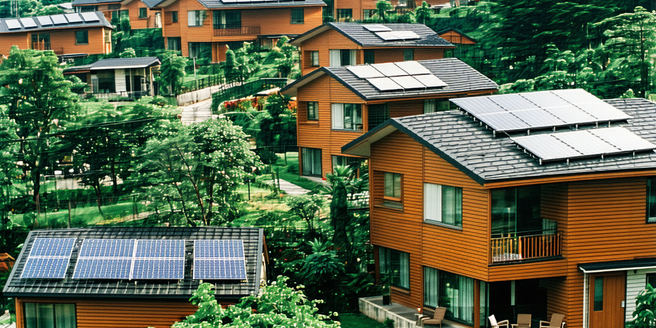Innovative Design In Low-cost Housing

The Rise of Affordable Eco-friendly Materials
The advent of affordable eco-friendly materials has revolutionized low-cost housing, making sustainability more accessible than ever. Builders now have a plethora of options, from recycled steel and bamboo to innovative materials like Earth blocks and mushroom insulation. These materials not only reduce the carbon footprint but are also cost-effective, providing homes that are both wallet-friendly and environmentally conscious. Local sourcing and increased competition have driven prices down further, allowing sustainable housing solutions to reach underserved communities. Governments and NGOs are recognizing the potential of these materials, leading to policy changes that promote their use. By reducing construction costs and promoting healthier living environments, affordable eco-friendly materials are poised to redefine the standards of low-cost housing across the globe.
Modular Construction: A Game Changer
Modular construction is transforming the landscape of low-cost housing through its swift, efficient, and scalable approach. By constructing sections of homes in a controlled factory setting and then assembling them on-site, this method significantly cuts down on construction time and labor costs. The precision of factory production ensures high-quality structures with minimized waste. With the ability to customize and expand, modular homes offer flexibility to meet varying housing needs. Developers can quickly respond to housing demands, addressing shortages without compromising quality. As technology advances, modular construction continues to improve, offering more sustainable and innovative solutions. Its adoption across the world signifies a paradigm shift in housing, merging affordability with modern design principles.
Smart Technology Integration in Low-Cost Homes
Incorporating smart technology in low-cost homes is no longer a distant dream but a rapidly growing reality. Home automation systems and energy-efficient devices are making their way into affordable housing, enhancing the quality of life for residents. These technologies enable better resource management, reducing utility bills through efficient energy consumption. Smart thermostats, lighting systems, and security cameras are now being integrated at minimal costs, thanks to advancements in technology and mass production. This integration not only adds convenience but also contributes to overall sustainability. Governments and developers are recognizing these benefits, and pilot projects are demonstrating the potential of smart homes for low-income families. The future of low-cost housing lies in this fusion of technology and affordability.
Community-driven Design Approaches
Community-driven design approaches are reshaping the way low-cost housing is conceptualized and executed. By involving residents in the planning and development process, these approaches ensure that the resulting homes truly meet the needs and desires of the community. This engagement not only improves the design but also enhances community cohesion and cooperation. This participatory method fosters a sense of ownership and pride among residents, leading to better maintenance and care of their environment. Local knowledge and cultural insights are harnessed to create spaces that resonate with the community’s identity. Furthermore, this approach often results in innovative solutions that might not emerge from top-down planning. Combined with professional expertise, community-driven design can produce efficient, sustainable, and culturally appropriate housing solutions, ensuring long-term satisfaction and stability.
Sustainability in Cost-Effective Housing Solutions
Sustainability is becoming an integral element of cost-effective housing solutions, entwining environmental consciousness with affordability. By focusing on energy efficiency, water conservation, and sustainable materials, these solutions lower utility costs for residents while reducing the ecological impact. Incorporating renewable energy sources, such as solar panels, and using passive design strategies can significantly decrease reliance on non-renewable resources. Implementing green building standards helps ensure that homes are not only affordable but also healthy for occupants. Developers and policymakers are increasingly recognizing the link between sustainability and affordability, promoting innovations that cater to both. As global awareness of environmental issues reaches new heights, sustainable cost-effective housing is leading the charge in creating resilient communities equipped to face future challenges.